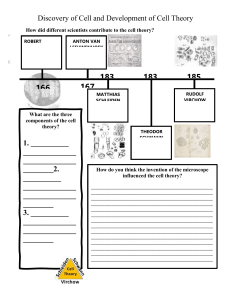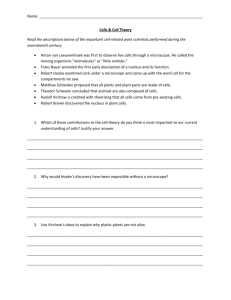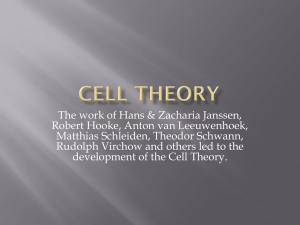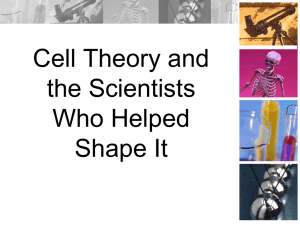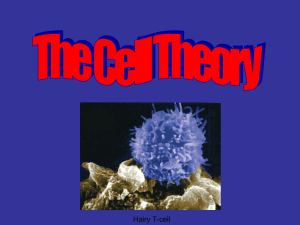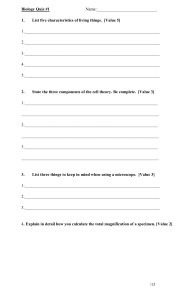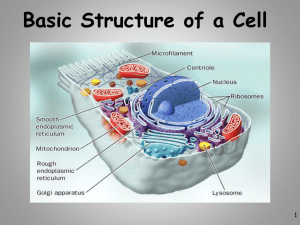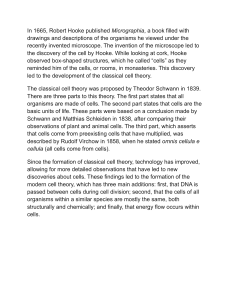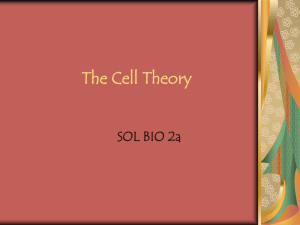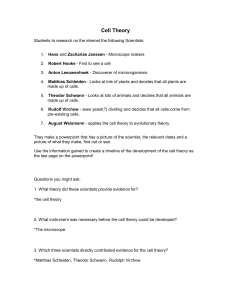Robert Hooke - English Scientist (1635 – 1703)
advertisement
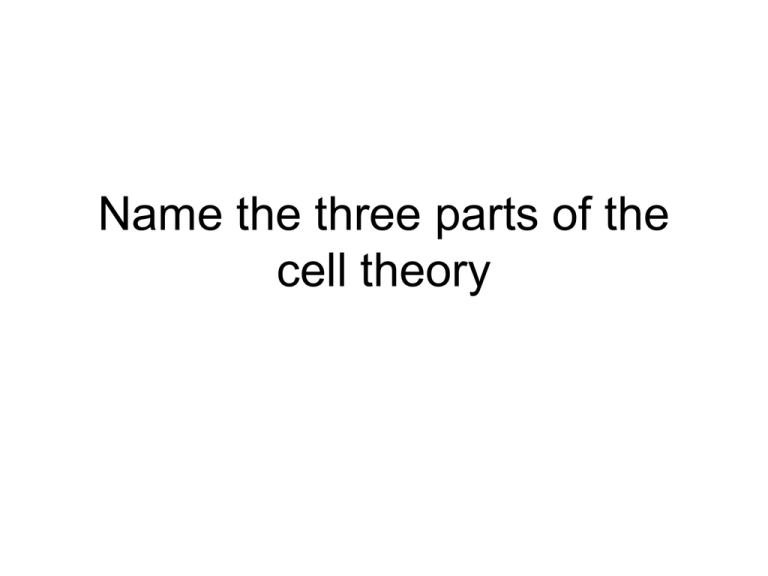
Name the three parts of the cell theory The Cell Theory 1. All living things are composed of cells. 2. Cells are the basic units of structure and function in living things. 3. All cells are produced from other cells. 1590 This father and son team are given credit for inventing the first compound microscope. Hans and Zacharias Janssen • Zhacharias most likely had help from his father Hans. • Could magnify 3 to 9 times (maybe up to 10x) • Would be more than 50 years before the microscope was used by scientists. 1665 English Scientist famous for his microscope drawings especially cork. Robert Hooke Hooke's microscope Courtesy - Billings Microscope Collection, National Museum of Health and Medicine, AFIP Robert Hooke’s Drawing of Cork • Thought the chambers looked like little rooms in the monastery. • Called them “cells” Robert Hooke - Published book in 1665 called Micrographia (tiny drawings). 1674 Dutch lens maker who was the first to identify bacteria by looking at scrapings from his teeth Anton Van Leeuwenhoek Leeuwenhoek was not a good artist so he described in great detail what he saw under the microscope. 1838 This German botanist studied plants and discovered that all plants were made up of cells Matthias Schleiden Matthias Schleiden (1804 – 1881) All plants are made up of cells 1839 This German scientist extended the work of his friend Matthias Schleiden and discovered that ALL cells (plants and animals) were made of cells. Theodor Schwann Theodor Schwann (1810 – 1882) All animals are made up of cells 1855 German Doctor famous for saying, “ominis cellula e cellula” all cells arise from other cells. Rudolf Virchow Virchow applied his ideas to disease. He thought that all disease was caused by cells that did not function properly. 1864 This French Chemist disproved the widely accepted theory of spontaneous generation. Louis Pasteur Think about the seven scientists that we have studied. Which three do you think were the most important in the development of the cell theory? Support each choice with information from your research.
